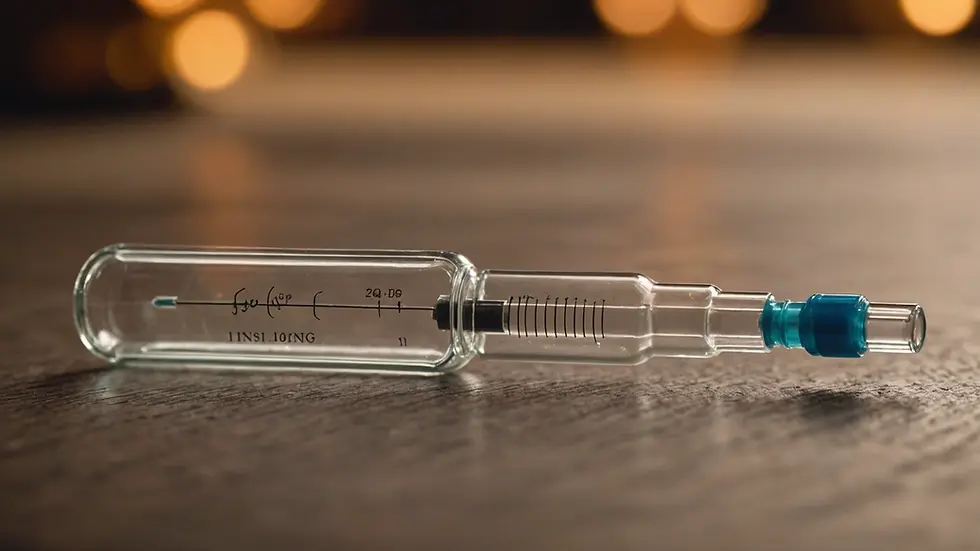The Miracle You've Never Heard Of: The Incredible Untold Story of How Insulin Revolutionized Diabetes Treatment
- Kelly Watt
- Feb 26
- 3 min read
Diabetes, especially Type 1, was once a life-threatening condition that stripped individuals of hope. Before insulin's discovery in 1921, a diagnosis meant navigating daily challenges with few options. This blog post uncovers the remarkable story of insulin, from its obscure beginnings to its pivotal role in diabetes treatment, highlighting its historical importance, the science behind its discovery, and the ongoing evolution in diabetes management.
Background: The Severity of Diabetes Before Insulin
Before insulin, Type 1 diabetes was like a death sentence. Patients faced extreme limitations, relying mostly on strict diets that offered little relief. The long-term consequences were grave; many experienced drastic weight loss, and some ended up in comas, with nearly 90% of diagnosed individuals expected to die within a year of diagnosis.
Families were faced with heart-wrenching decisions, as they watched loved ones suffer. Physicians, with no effective treatments available, felt increasingly powerless as both young and old fell victim to this relentless disease. The need for a viable remedy was urgent, spurring scientists and doctors worldwide into action.
Discovery and Development of Insulin
In 1921, a major breakthrough in medical history occurred at the University of Toronto. Dr. Frederick Banting, along with student Charles Best, set out to isolate insulin from the pancreases of dogs. Their groundbreaking work showed that this powerful hormone could significantly lower blood sugar levels in diabetic animals.
Key contributions from John Macleod, who provided essential resources, and James Collip, who refined the insulin for human use, accelerated progress. Together, these efforts paved the way for a medical revolution that would save millions of lives.
The First Injection Attempt
On January 11, 1922, a turning point arrived when Leonard Thompson, a 14-year-old boy afflicted with Type 1 diabetes, received the first insulin injection. Unfortunately, the initial extract had impurities, causing an allergic reaction.
Though this setback was discouraging, the team persisted. By January 23, after refining their method, Thompson received a second injection that markedly improved his blood sugar levels and overall health. His remarkable recovery showcased the potential of insulin, igniting hope for those suffering from diabetes.
How Was It Given?
Initially, insulin was delivered via subcutaneous injections, a common method still used today. In the early days, insulin was extracted from the pancreases of pigs and cows. Patients used glass syringes with reusable needles, which required meticulous sterilization—often by boiling. This labor-intensive process highlighted the challenges patients faced compared to the ease of modern insulin delivery devices.

Impact and Legacy
By 1923, Eli Lilly & Co. began mass-producing insulin, transforming diabetes care forever. This innovation shifted the perception of diabetes from a fatal illness to a chronic yet manageable condition.
Banting and Macleod were awarded the Nobel Prize in Physiology or Medicine in 1923, honored alongside Best and Collip for their lifesaving work. Their contributions not only saved countless lives but also inspired further diabetes research, marking a significant milestone in medical history.
Evolution Since Then
For decades, insulin came from animal sources. The 1980s heralded a revolutionary shift with the introduction of synthetic human insulin, offering a more consistent potency while reducing allergic reactions in many patients.
Today, diabetes management has advanced significantly from the early days of insulin therapy. Innovations like insulin pens, pumps, and continuous glucose monitors have improved accessibility and accuracy. For instance, studies show that continuous glucose monitoring can lower hemoglobin A1c levels by an average of 1% in people with diabetes.
Innovative research continues, aiming to create even more advanced treatments, such as artificial pancreas systems and new medications that enhance insulin sensitivity or mimic its action.
A Lasting Legacy
The story of insulin's discovery exemplifies the power of scientific collaboration and determination. It serves as a reminder that, even in despair, hope can emerge through relentless effort and innovation. The desperate search for a cure has transformed into a lasting legacy that has improved the lives of millions and revolutionized diabetes treatment worldwide.
As we commemorate this groundbreaking achievement, we look forward to the future of diabetes management, driven by the same spirit of curiosity and resilience that sparked this monumental change nearly a century ago.
In the vast panorama of medical advancements, the discovery of insulin is undeniably one of the greatest breakthroughs. Although you might not have heard this story before, it has saved lives and continues to make a profound impact every day.



Comments